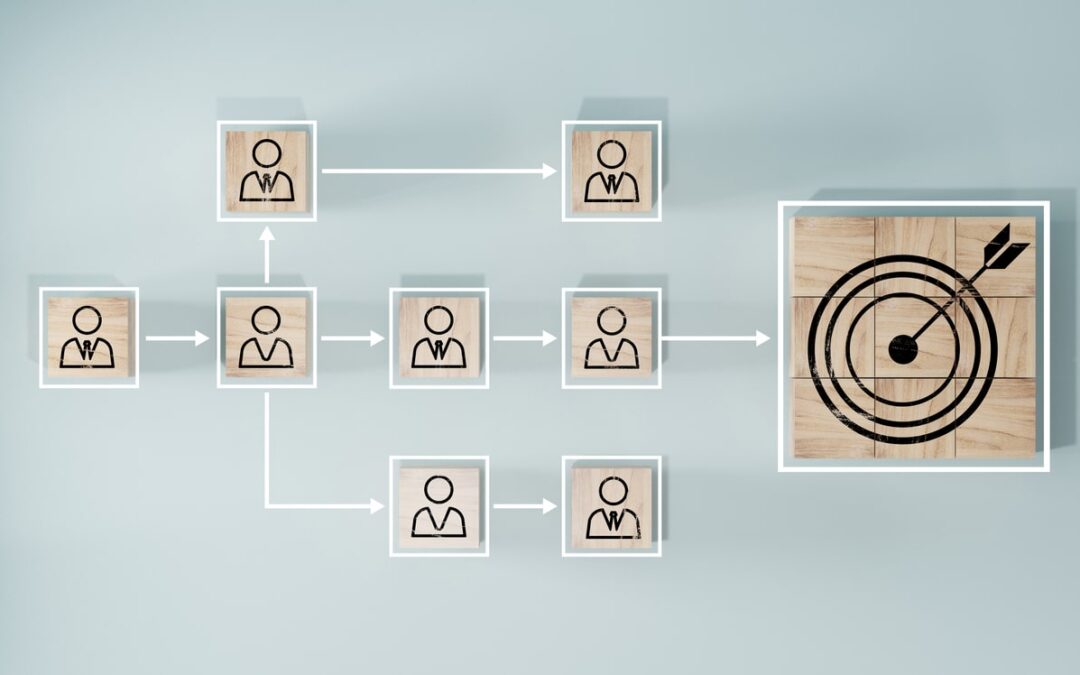Whether you’re leading or supporting a project, your stakeholders—leadership, managers, peers, colleagues, business partners, and internal and external customers—are picking up cues from their interactions with you. As a result, they are making evaluations based on their perceptions about you, your overall approach, reliability, work ethic, and capabilities.
Managing these various groups is a process that includes communicating, aligning expectations, addressing and resolving issues or concerns, creating buy-in for decisions, and completing assigned actions.
Making an effort to proactively strengthen these relationships can have a positive effect. For instance, these individuals could become your advocates, supporting you in your career aspirations.
Engage and communicate with stakeholders based on their preferences.
Cultivating meaningful relationships takes commitment and reciprocity, where both parties trust one another, feel comfortable speaking up, and adapt to accommodate preferences for mutual success.
Because of this, establishing catch-up calls with your network, providing status updates, and tapping into the “8Cs of Good Communication” can be beneficial, so you’re not only reaching out when you need something. Also, recognizing individuals and teams for their contributions and reaching milestones can promote engagement and camaraderie.
Here are some additional ways to proactively foster stakeholder relations:
Conduct a stakeholder analysis.
Once you’ve identified stakeholders for your role, task, or project, schedule time to ask them what is important to them. Using open-ended questions can help you discern how best to engage them. For example: “How would you describe the main objective of [my role, task, project]?” “What would success look like?” “What information do you [and your teams] need?” and “How do you prefer to receive updates?” For high-profile activities, you can also consider filling out a “Power/Interest Grid” where the X-Axis represents “Interest” and the Y-Axis “Power.” For instance, someone funding your assignment and directly impacted by the results will likely be placed in the top right quadrant, “Manage Closely,” versus a stakeholder with minimal interest or influence who would fall in the lower left quadrant, “Monitor.”
Manage expectations through effective communication.
When you embark on a new partnership, it’s important to align expectations, goals, objectives, and actions upfront. Equally important is agreeing on ways to keep each other informed, remaining open to change, and demonstrating dependability to cultivate trust. Additionally, checking in to hear what’s working well and what needs to be improved can help you ensure your stakeholders feel seen, heard, and understood. Also, expect the unexpected and recognize that outside circumstances can influence moods, reactions, and impact discussions, where tensions rise and words are expressed in a way that disregards the interests of another. In moments like these, a repair may be warranted. Tapping into your emotional intelligence skills, embracing silence, exhibiting patience, and honoring different perspectives can assist you in balancing your communication style.
Make content applicable to the recipient.
If your job entails supporting other people or functions, you may need to create buy-in for your concepts. Uniting colleagues and teams under a shared purpose necessitates generating a common awareness and understanding of the topic. Those you’re trying to persuade need to be able to “connect the dots” in terms of relevance to have the desire to proceed. Doing so can be difficult when their priorities differ, or they are overwhelmed with work or dealing with their own challenges. That’s where knowing people’s “go-to strategy” comes in handy. Some people are thinkers, others are doers, and some are feelers, meaning their focus of attention differs. By considering the mindset of those you need to convince, you can tailor messaging to meet people where they are at in the process.
Watch for your personal agenda.
Knowing your wants and needs and insight into how you act, think, and feel can help you be mindful and remain agile, situationally aware, and relevant. If what you’re saying isn’t being received as intended and you find yourself pushing your point, you may be too tied to your personal perspective. The more open you remain to feedback, the easier it will be to pivot and ask questions to clarify topics and find compromises. Sometimes, the direction or recommendations you are given may be due to factors outside your and the other person’s control, e.g., organizational culture, internal politics, policies, and procedures.
Be empathetic in your approach.
Like you, your stakeholders’ calendars are probably filled with many meetings and “fire drills” on top of their personal and professional duties. Because of that, how they show up will fluctuate depending on their leadership style, the topic’s priority level, and what’s top of mind for them that day. This means that regardless of all your hard work and preparation, you may be asked to cut things short or focus only on the essentials. Showcasing that you understand and respect their time will be paramount. Your ability to stay present, listen intently, and acknowledge what you hear is crucial. Rather than avoiding discomfort by focusing on what you’ll say next, spacing out, or glossing over any concerns, take accountability for the next steps to demonstrate your leadership acumen and maturity.
You get to choose.
In business settings, there can be some norms and values that define an organization’s culture and expectations of individuals. These may shift depending on who is in charge, but that doesn’t need to dictate how you show up and treat others. Words are only part of the experience equation; most will remember how you made them feel. Extending a helping hand, including others, and welcoming diverse viewpoints and styles cultivates a sense of belonging. You get to decide how you want to be.
Activate your best with those around you.
Self-leadership is about getting to know yourself better and applying that knowledge to how you connect with others. As a lifelong student, certified professional coach, and consultant, activating the best in others through self-leadership, interpersonal relations, and team dynamics are passions of mine. My approach is personalized and customized, tapping into various assessments, disciplines, modalities, and techniques. Check out my “Micro & Mini Service Offerings” and try one session to inspire you. Sign up solo or with another person or group to work on a specific exercise or activity and split the costs! Contact me to get started.

